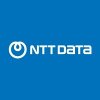Filter interviews by
NCR Corporation Interview Questions and Answers
92 Interview questions
Experienced HR Manager with a passion for fostering positive workplace culture and driving employee engagement initiatives.
Over 8 years of experience in human resources management, focusing on talent acquisition and employee development.
Successfully implemented an employee engagement program that increased retention rates by 20% over two years.
Skilled in conflict resolution, having mediated numerous workplace disp...
I bring a unique blend of experience, skills, and passion for HR that aligns perfectly with your company's goals and culture.
Proven track record in talent acquisition, having successfully filled over 100 positions in diverse roles within my previous organization.
Strong interpersonal skills, demonstrated by my ability to mediate conflicts and foster a positive work environment, resulting in a 20% increase in employ...
Implement a function to find the maximum sum of a contiguous subarray using Kadane's algorithm.
Use Kadane's algorithm for optimal O(n) time complexity.
Initialize two variables: max_current and max_global.
Iterate through the array, updating max_current as the maximum of the current element or the sum of max_current and the current element.
Update max_global if max_current exceeds it.
Example: For array [-2,1,-3,4,-1,...
I was asked to write SQL queries for data retrieval, aggregation, and manipulation during the interview.
Write a query to select all columns from a table: `SELECT * FROM employees;`
Create a query to count the number of records: `SELECT COUNT(*) FROM orders;`
Join two tables to retrieve related data: `SELECT a.name, b.order_date FROM customers a JOIN orders b ON a.id = b.customer_id;`
Use a WHERE clause to filter resu...
Oops in Java refers to Object-Oriented Programming concepts like inheritance, polymorphism, encapsulation, and abstraction.
Oops stands for Object-Oriented Programming
Key concepts include inheritance, polymorphism, encapsulation, and abstraction
Example: Inheritance allows a class to inherit attributes and methods from another class
Solid Principles are a set of five design principles for writing clean, maintainable, and scalable code.
Single Responsibility Principle (SRP) - A class should have only one reason to change.
Open/Closed Principle (OCP) - Software entities should be open for extension but closed for modification.
Liskov Substitution Principle (LSP) - Objects of a superclass should be replaceable with objects of its subclasses without...
Our current project architecture follows a microservices design pattern with Docker containers and Kubernetes for orchestration.
Microservices architecture
Docker containers
Kubernetes for orchestration
OOPs stands for Object-Oriented Programming. It is based on four main pillars: Inheritance, Encapsulation, Abstraction, and Polymorphism.
Inheritance: Allows a class to inherit properties and behavior from another class. Example: class B extends class A.
Encapsulation: Bundling data and methods that operate on the data into a single unit. Example: using private access modifiers to restrict access to certain data.
Abs...
Loop in a linked list refers to a situation where a node in the list points to a previous node, creating a cycle.
Check for a loop using Floyd's cycle detection algorithm
Use two pointers, one moving at twice the speed of the other
If the two pointers meet at some point, there is a loop
To delete a node in a linked list with a given pointer, update the node's value and next pointer to the next node's value and next pointer.
Set the value of the node to the value of the next node
Set the next pointer of the node to the next node's next pointer
NCR Corporation Interview Experiences
138 interviews found
I applied via Naukri.com and was interviewed in Aug 2021. There were 3 interview rounds.
(12 Questions)
- Q1. What are interfaces and what is difference between an interface and abstract class
- Q2. What are solid principles and explain them
- Ans.
SOLID principles are a set of five design principles for writing maintainable and scalable code.
Single Responsibility Principle (SRP) - a class should have only one reason to change
Open-Closed Principle (OCP) - a class should be open for extension but closed for modification
Liskov Substitution Principle (LSP) - subtypes should be substitutable for their base types
Interface Segregation Principle (ISP) - clients should n...
- Q3. What are extension methods
- Ans.
Extension methods are static methods that allow adding new functionality to existing types without modifying the original type.
Extension methods are defined in a static class.
They must be declared with the 'this' keyword before the first parameter.
They can be called as if they were instance methods of the extended type.
Extension methods can be used to add functionality to built-in types or custom types.
Example: adding ...
- Q4. Does c# support multiple inheritence
- Ans.
No, C# does not support multiple inheritance.
C# only supports single inheritance, where a class can inherit from only one base class.
However, C# does support multiple interface inheritance, where a class can implement multiple interfaces.
This is achieved using the 'interface' keyword instead of 'class'.
- Q5. How routing is done in mvc
- Ans.
Routing in MVC is done through the use of routes, which map URLs to controller actions.
Routes are defined in the RouteConfig.cs file in the App_Start folder
Routes consist of a URL pattern and a corresponding controller action
Routes can also include optional parameters and constraints
Routing is done through the use of the ASP.NET routing engine
Routing can be customized by creating custom route handlers
- Q6. What are filters in mvc
- Ans.
Filters in MVC are used to intercept and modify HTTP requests and responses.
Filters can be used to implement authentication and authorization.
They can also be used for caching and logging.
Examples of filters include AuthorizationFilter, ActionFilter, and ExceptionFilter.
- Q7. What is difference between virtual and override keywords
- Ans.
Virtual keyword is used to declare a method in a base class that can be overridden in a derived class. Override keyword is used in the derived class to override the implementation of the virtual method.
Virtual keyword is used in the base class to declare a method that can be overridden in the derived class
Override keyword is used in the derived class to override the implementation of the virtual method
Virtual methods p...
- Q8. What are indexes in sql
- Ans.
Indexes in SQL are used to improve the performance of queries by allowing faster data retrieval.
Indexes are created on one or more columns of a table.
They work like a book index, allowing the database to quickly find the data.
Indexes can be clustered or non-clustered.
Clustered indexes determine the physical order of data in a table.
Non-clustered indexes create a separate structure to store the index data.
Indexes should...
- Q9. What is difference between stored procedure and function
- Ans.
Stored procedures are used to perform a set of actions, while functions return a single value.
Stored procedures are precompiled and stored in the database, while functions are compiled at runtime.
Functions can be used in SQL statements, while stored procedures cannot be used in SQL statements.
Functions can be called from within stored procedures, but stored procedures cannot be called from within functions.
- Q10. Tell me about yourself
- Q11. What is dependency injection
- Ans.
Dependency injection is a design pattern used to remove hard-coded dependencies and make code more modular and testable.
Dependency injection involves injecting dependencies into a class rather than having the class create them itself.
This allows for easier testing and swapping out of dependencies.
There are three types of dependency injection: constructor injection, setter injection, and interface injection.
Examples of ...
- Q12. What is singleton design pattern
- Ans.
Singleton design pattern restricts the instantiation of a class to a single instance and provides a global point of access to it.
Used when only one instance of a class is required throughout the system
Provides a global point of access to the instance
Implemented using a private constructor, static method, and static variable
Example: Logger class in Java
(6 Questions)
- Q1. Tell me about yourself
- Q2. What are different projects that I have worked
- Q3. Did you face any challenges in your earlier projects
- Q4. What is your salary expectations
- Q5. Explain about dependency injection
- Ans.
Dependency injection is a design pattern that allows objects to receive dependencies from external sources rather than creating them internally.
Dependency injection helps to decouple components and make them more reusable and testable.
There are three types of dependency injection: constructor injection, setter injection, and interface injection.
Example: Instead of creating a database connection object inside a class, w...
- Q6. What is a singleton design pattern
- Ans.
Singleton design pattern restricts the instantiation of a class to a single instance and provides a global point of access to it.
Used when only one instance of a class is required throughout the system
Provides a global point of access to the instance
Implemented using a private constructor, static method, and static variable
Example: Logger class, Database connection class
(5 Questions)
- Q1. Why should we hire you?
- Q2. Share details of your previous job.
- Ans.
In my previous role, I developed scalable web applications and collaborated with cross-functional teams to enhance user experience.
Developed a customer relationship management (CRM) system using React and Node.js, improving client interaction by 30%.
Collaborated with UX/UI designers to implement responsive designs, resulting in a 25% increase in user engagement.
Led a team of 4 engineers in an Agile environment, success...
- Q3. What are your salary expectations?
- Q4. Why are you looking for a change?
- Q5. Tell me about yourself.
Interview Preparation Tips
Skills evaluated in this interview
(2 Questions)
- Q1. Explain Solid Principles
- Ans.
Solid Principles are a set of five design principles for writing clean, maintainable, and scalable code.
Single Responsibility Principle (SRP) - A class should have only one reason to change.
Open/Closed Principle (OCP) - Software entities should be open for extension but closed for modification.
Liskov Substitution Principle (LSP) - Objects of a superclass should be replaceable with objects of its subclasses without affe...
- Q2. What are Design Patterns
- Ans.
Design patterns are reusable solutions to common problems encountered in software design and development.
Design patterns provide a way to communicate solutions to common design problems
They help in making code more maintainable, scalable, and reusable
Examples include Singleton, Factory, Observer, and Strategy patterns
(2 Questions)
- Q1. Explain the current project architecture you are working on.
- Ans.
Our current project architecture follows a microservices design pattern with Docker containers and Kubernetes for orchestration.
Microservices architecture
Docker containers
Kubernetes for orchestration
- Q2. Why you are intrested in NCR
- Ans.
I am interested in NCR because of its reputation for innovation and cutting-edge technology in the software industry.
NCR has a strong reputation for innovation and cutting-edge technology
I am excited about the opportunity to work on challenging projects at NCR
I believe NCR offers a great platform for career growth and development
All aptitude coding and mcqs
(2 Questions)
- Q1. Tell me about oops in java
- Ans.
Oops in Java refers to Object-Oriented Programming concepts like inheritance, polymorphism, encapsulation, and abstraction.
Oops stands for Object-Oriented Programming
Key concepts include inheritance, polymorphism, encapsulation, and abstraction
Example: Inheritance allows a class to inherit attributes and methods from another class
- Q2. Some recursion based questions
I applied via Approached by Company and was interviewed in Oct 2024. There were 2 interview rounds.
Write a program to print first and last letters of words alternatively from am list
(2 Questions)
- Q1. Explain oops concept and it's pillars
- Ans.
OOPs stands for Object-Oriented Programming. It is based on four main pillars: Inheritance, Encapsulation, Abstraction, and Polymorphism.
Inheritance: Allows a class to inherit properties and behavior from another class. Example: class B extends class A.
Encapsulation: Bundling data and methods that operate on the data into a single unit. Example: using private access modifiers to restrict access to certain data.
Abstract...
- Q2. Android architecture , thread v/s coroutine
Interview Preparation Tips
(2 Questions)
- Q1. Asked linq question and answered correctly with little modification, still was not impressed
- Q2. Expections were little high.
I appeared for an interview in May 2025, where I was asked the following questions.
- Q1. Tell me about yourself," "Why do you want this job?", "What are your strengths and weaknesses?
- Q2. Can you tell me about yourself?
Interview Preparation Tips
(2 Questions)
- Q1. Loop in a linked list
- Ans.
Loop in a linked list refers to a situation where a node in the list points to a previous node, creating a cycle.
Check for a loop using Floyd's cycle detection algorithm
Use two pointers, one moving at twice the speed of the other
If the two pointers meet at some point, there is a loop
- Q2. Delete the node in a linked list with given pointer
- Ans.
To delete a node in a linked list with a given pointer, update the node's value and next pointer to the next node's value and next pointer.
Set the value of the node to the value of the next node
Set the next pointer of the node to the next node's next pointer
(2 Questions)
- Q1. Tell me about yourself
- Q2. Why you want to join NCR
Skills evaluated in this interview
(3 Questions)
- Q1. Questions around Data structures like LinkedList, stack and queue
- Q2. Coding questions based on Array and strings in java.
- Q3. Few questions around java8 streams
Interview Preparation Tips
I applied via Approached by Company and was interviewed in Dec 2024. There was 1 interview round.
(1 Question)
- Q1. Deep dive into all DevOps tools
I appeared for an interview in Apr 2025, where I was asked the following questions.
- Q1. Inventory related questions, material feed,
- Q2. Material maintenance,
Witten test DSA QUESTIONS along with aptitude
(1 Question)
- Q1. Intro to asked prepare well
(1 Question)
- Q1. Intro to asked prepare well
Top trending discussions






NCR Corporation Interview FAQs
Some of the top questions asked at the NCR Corporation interview -
The duration of NCR Corporation interview process can vary, but typically it takes about less than 2 weeks to complete.
Tell us how to improve this page.
NCR Corporation Interviews By Designations
- NCR Corporation Software Engineer Interview Questions
- NCR Corporation Software Developer Interview Questions
- NCR Corporation Software Engineer2 Interview Questions
- NCR Corporation Software Engineer II Interview Questions
- NCR Corporation Software Engineer Intern Interview Questions
- NCR Corporation Customer Engineer Interview Questions
- NCR Corporation Software Developer Intern Interview Questions
- NCR Corporation QA Engineer Interview Questions
- Show more
Interview Questions for Popular Designations
- Software Engineer Interview Questions
- Software Developer Interview Questions
- Software Engineer2 Interview Questions
- Software Engineer II Interview Questions
- Software Engineer Intern Interview Questions
- Senior Executive Interview Questions
- Senior Associate Interview Questions
- Consultant Interview Questions
- Show more
Overall Interview Experience Rating
based on 125 interview experiences
Difficulty level
Duration
Interview Questions from Similar Companies
NCR Corporation Reviews and Ratings
based on 1.7k reviews
Rating in categories
|
Software Engineer
393
salaries
| ₹9.6 L/yr - ₹17.5 L/yr |
|
Senior Software Engineer
283
salaries
| ₹14.6 L/yr - ₹30 L/yr |
|
Software Engineer2
196
salaries
| ₹13 L/yr - ₹21.3 L/yr |
|
Software Engineer III
186
salaries
| ₹21.5 L/yr - ₹35 L/yr |
|
Software Engineer II
156
salaries
| ₹14.1 L/yr - ₹23 L/yr |

DXC Technology

Sutherland Global Services

Optum Global Solutions

Virtusa Consulting Services
- Home >
- Interviews >
- NCR Corporation Interview Questions













